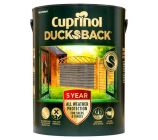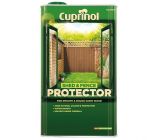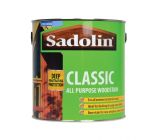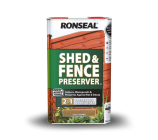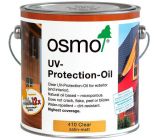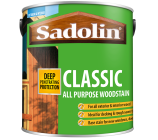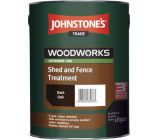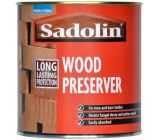
Fence Paint, Treatment & Protection
-

Cuprinol 5 Year Ducksback
From:£0.00(inc VAT) -

Cuprinol Shed and Fence Protector
From:£29.69(inc VAT) -

Sadolin Classic Wood Protection Tester Pots
From:£3.95(inc VAT) -

Ronseal Shed and Fence Preserver
From:£45.95(inc VAT) -

Cuprinol Garden Shades
From:£10.49(inc VAT)9 colours multiple sizes -

Cuprinol Spray & Brush
From:£46.95(inc VAT) -

Osmo UV Protection
From:£27.29(inc VAT)multiple sizes -

Barrettine Log Cabin Treatment
From:£36.95(inc VAT) -

Sadolin Classic Wood Protection
From:£16.95(inc VAT)FREE DELIVERY on 5lt Standard Colours 25 colours -

Johnstone's Shed & Fence Treatment
From:£15.95(inc VAT) -

Sadolin Wood Preserver (Discontinued)
From:£22.49(inc VAT) -

Sikkens Cetol Novatech
From:£58.95(inc VAT)multiple sizes
What is the best paint for fences?
We only stock fence paints that are highly trusted and rated by tradesmen , including Ronseal fence paint and Cuprinol fence paint. However, we would recommend the Cuprinol Spray & Brush alongside their Garden Shades for ease and quickness. The Ronseal Shed & Fence Preserver is also an excellent choice for protecting outdoor wood from rot, decay and wood-burrowing insects.
How long does fence paint take to dry?
The drying time can vary from paint to paint. However, in normal weather, fence paint can dry in 2-4 hours.
Is it better to stain or paint a fence?
This will entirely depend on your desired appearance for your fence. If you require an opaque, even coverage, then go for fence paint. However, if you still want to see the natural wood texture, we would recommend a wood stain.
You should also take into consideration your current living arrangement. For example, if you live in a rented house, fence paint will be a better choice as it can be easily scraped off or removed with a paint stripper. Wood stains are required to fade over time.
How many fence panels will 5l of paint cover?
5 litres of fence paint will cover up to 30m² or 10 fence panels with one coat. For a more opaque finish, we would recommend buying more for two coats.
How long does Cuprinol fence paint last?
Cuprinol Garden Shades is weatherproof for 4 years , so there won’t be any need for touchups. We also stock Cuprinol 5 Years Ducksback which will protect your fence for 5 years.
How do you prepare a fence for painting?
To increase the longevity of results when you paint your fence, preparation is important. Clean your fence by using a hard bristle brush or broom to sweep away any dirt or debris, ensure that any old paint or stain has been removed and thoroughly wash the fence using a pressure washer. After this, you can sand down any rough areas or splinters to ensure a smooth finish when applying your fence paint.
How do you paint a fence?
- Ensure you have prepared the fence beforehand. This includes any cleaning or sanding of the wood.
- Use a large brush or sprayer and make sure to follow the direction of the timber grain. For example, use horizontal strokes for horizontal panes of wood, and vertical strokes for vertical panes of wood. This will allow for a smoother finish.
- When painting, start at the top and work downwards. This can help you to catch any drips.
- Make sure to apply the paint liberally. Aim for enough paint to fully penetrate the fence, but not too much paint that it could leave drips. If this seems like too much effort, a sprayer can paint your entire fence in a few minutes and will require less skill to gain an even finish.

